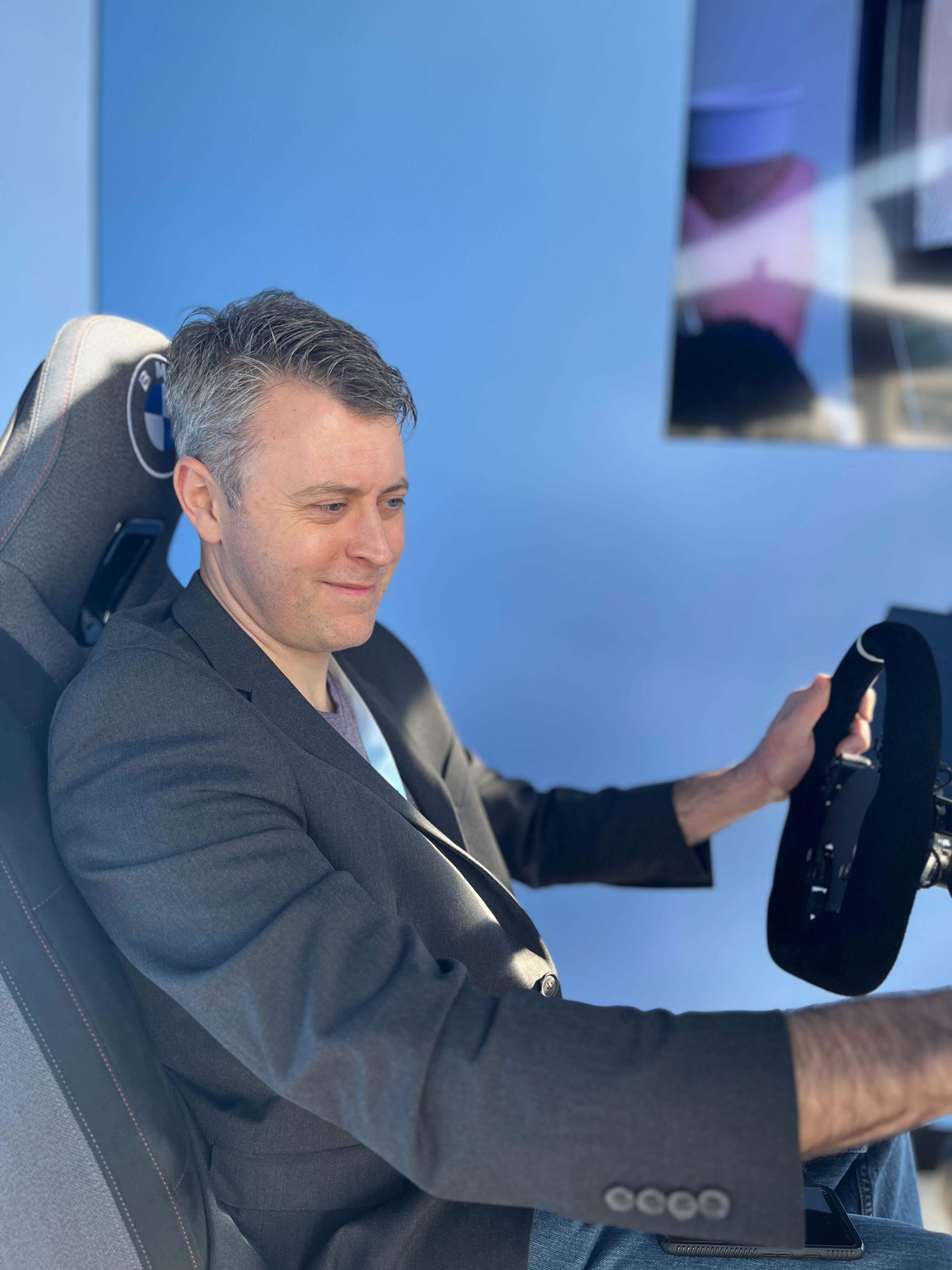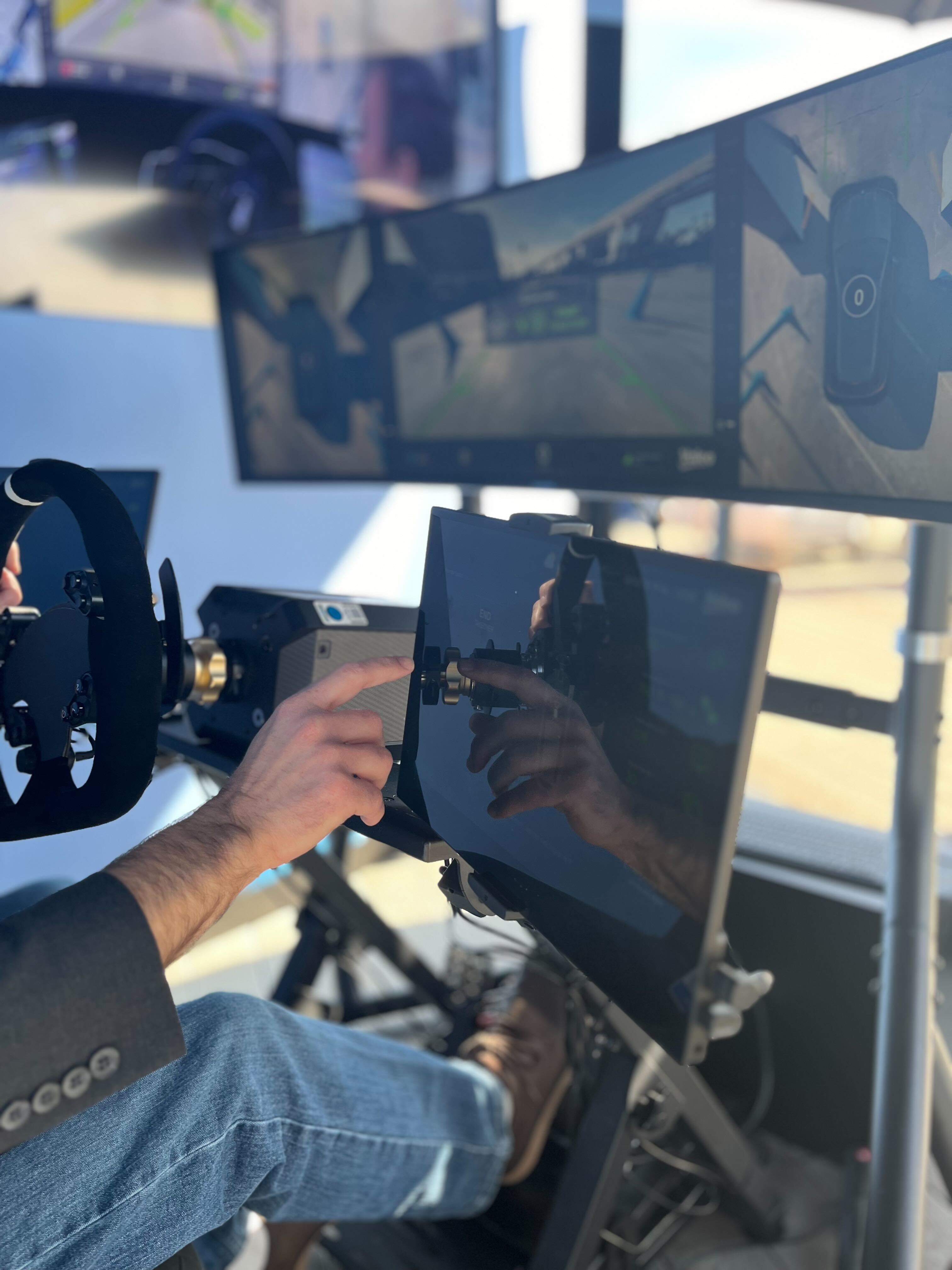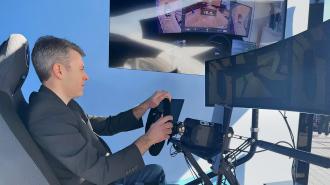We parked an SUV in Las Vegas. This doesn’t typically justify an entire article, but the thing is, we weren’t in the car. We were remotely controlling it from an operating station as it navigated to the parking spot.
It was a demo of BMW’s new “valet parking” concept, which was featured at the company’s booth at this year’s CES.
The operation station we controlled the car from, several yards away from the vehicle, looked like a gaming setup you’d see in an old arcade or a racing enthusiast’s living room: a seat, pedals, and a steering wheel facing two computer screens. The large screen displayed a variety of visual information on the car, such as the front-view and rearview mirror views and overhead displays. The second, smaller screen served as a dashboard with a speedometer, gear shift, and the like.
If you ignore the lack of a driver, the car looked like a standard BMW iX SUV. And that’s because it basically is one.
“We found it’s possible to remote drive with the technology already in vehicles [such as the iX],” Felix Przioda, innovation manager for the valet concept, told Freethink. “There’s no additional hardware needed. You just tweak the software.”
Those software tweaks, however, make for one unique driving experience.
A new kind of remote-controlled car
As long as the car is connected to a cellular network, the driver can turn over control of the car to a remote operator. As said operator, all we had to do was press the brake and hit an on-screen button. A simulated rev of the engine, and we were in the metaphorical driver’s seat.
And then we proceeded to immediately set off an alarm.
Because of how the car had been previously parked — and, ahem, through no fault of the operator’s skills — the vehicle came close to a course barrier, and this happy accident allowed us to demo some of the system’s safety features.

Some of these are fairly common in newer vehicles. An overhead view on the heads-up display showed nearby obstacles and offered directional projections. However, based on the information the car read from the environment — like the proximity to the nearby barrier — it could adjust the allowable speed. It also wouldn’t start moving forward until it was sure the path was clear (which created some lag that did take some getting used to).
“What you’re actually doing is giving the car a direction, and the car always checks to see if that direction is possible,” Przioda explained.
Once we got out of the parking spot and onto the course proper, the system let us put pedal to metal and open it up to a top speed of 10 kilometers per hour (6 mph) — again for safety, as you don’t want (or need) valets Tokyo drifting your car into the garage. We tested the safety features further by driving closer to the course edge, and the car slowed down despite us not easing up on the pedal. To Przioda’s credit, he didn’t blink.
When we finished our test drive, we parked it and relinquished control to anyone who wanted to get in and take it for an actual drive.

Thinking beyond the valet
Currently, BMW is positioning the concept for valet services. You drive up to the restaurant, get out of your car, and a remote operator parks it for you. When you’re finished dining, you signal that you’re ready to go, and the remote operator returns your car to the restaurant for pickup.
The technology has many more applications though, even in its current state. For instance, rental car companies could use it for fleet management, while warehouses and shipping yards could use it for logistics. Before that, however, the next steps for the concept are regulatory approval and for BMW to create an internal timeline.
Looking ahead, Przioda pointed out that, with some software tweaks and hardware additions to the vehicle, the concept can expand much further. You could create remote operating centers of trained drivers ready to take you or your vehicle anywhere you need it to go.
Maybe you’re too tired to drive: Have an operator remote taxi you home in your car. Or you can send your car to pick up a family member from the airport if you’re stuck at work. And for people who can’t drive themselves, the technology can still give them access to a personal vehicle.
As long as there’s a cellular network and power in the car, there would theoretically be nowhere the vehicle couldn’t be remotely operated. “Level 4 [high-driving automation] is expensive in vehicles. If you can offer the customer the same service with remote operation with less cost and earlier application, that would be great,” Przioda said.






